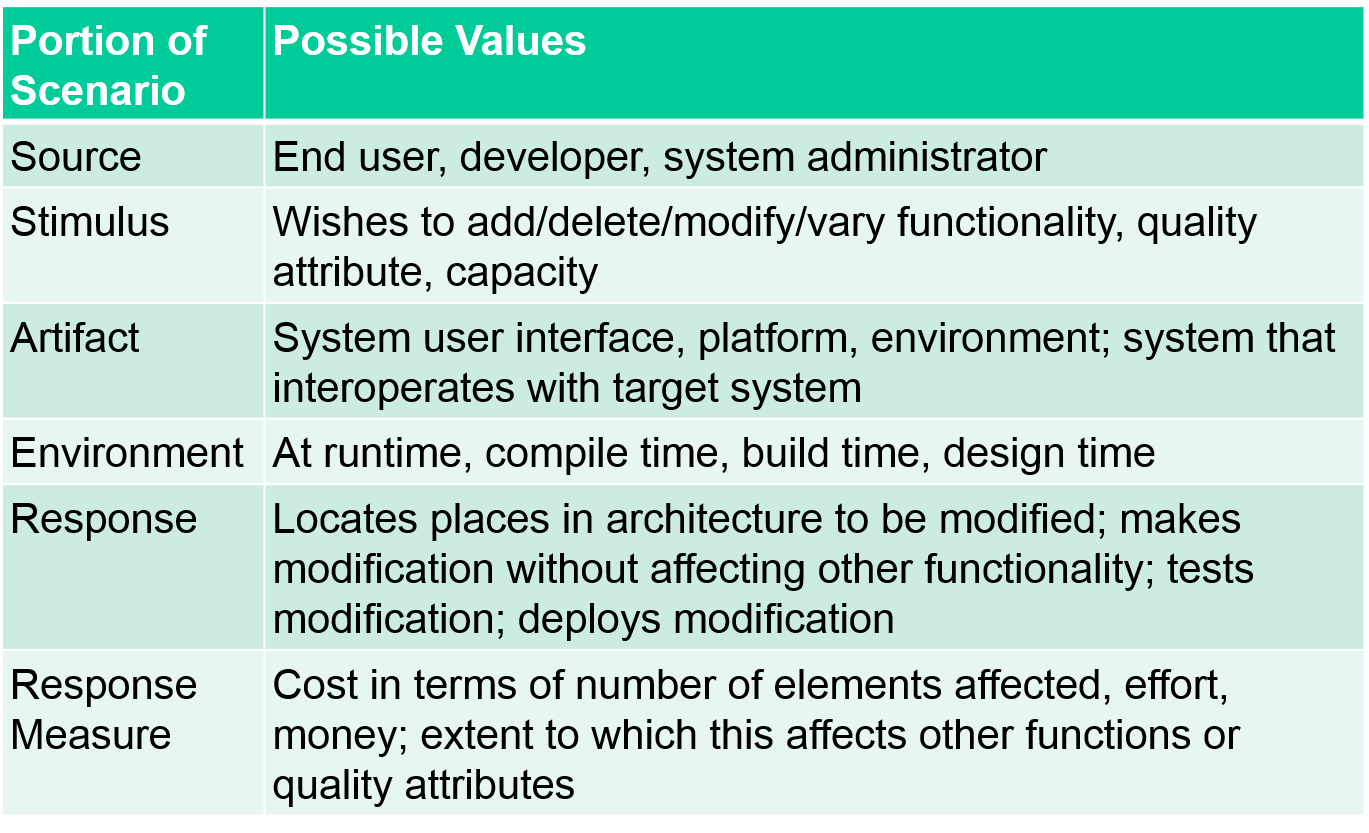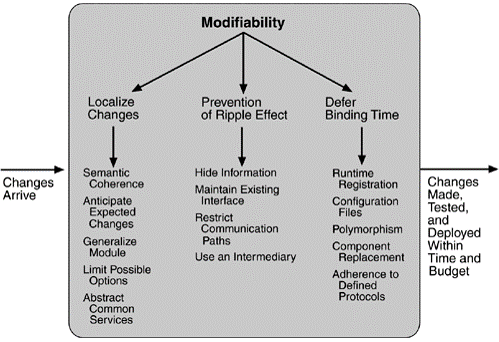TreeviewCopyright © aleen42 all right reserved, powered by aleen42
Modifiability Back
- Modifiability(可修改性)注重的是一個系統修改所需的代價
- 軟件幾乎不可能不發生改變, 因為一個軟件其與外部的關係是無限的, 外界一個因素的影響都將引起系統的改變.
- 提高軟件可修改性涉及到設計模式 (Design Pattern).
- 儘量達到高內聚, 低耦合, 降低依賴
- 語法上的依賴(接口, 方法等)
- 語義上的依賴(數據的語義不同)
Scenarios(場景)

- example:

Tatics(策略)

1. Localize Change
- Semantic Coherence: 維持語義的一致性
- Anticipate Expected Changes: 預測預期的修改
- Generalize Module: 通用化模塊
- Limit Possible Options: 限制可能的選項
- Abstract Common Service: 抽象出公共的服務
2. Prevention of Ripple Effect(漣漪效應)
- Hide information: 把類中的屬性儘量設置成private或protected.
- Maintain Existing interface: 維持現有的接口, 而不去改變它.
- Restrict Communication Path: Facade模式, 提供統一的門戶.
3. Defer Binding Time(延遲綁定時間)
- Runtime Registration
- Publish/Subscribe
- Configuration files: 通過配置文件避免數據寫入代碼
- Polymorphism: 動態綁定, 只有運行時才知道具體的實現
- Component Replacement: 用現成的框架去替換
- Adherence to defined protocols: 堅守已經定義的協議來修改
As the plugin is integrated with a code management system like GitLab or GitHub, you may have to auth with your account before leaving comments around this article.
Notice: This plugin has used Cookie to store your token with an expiration.